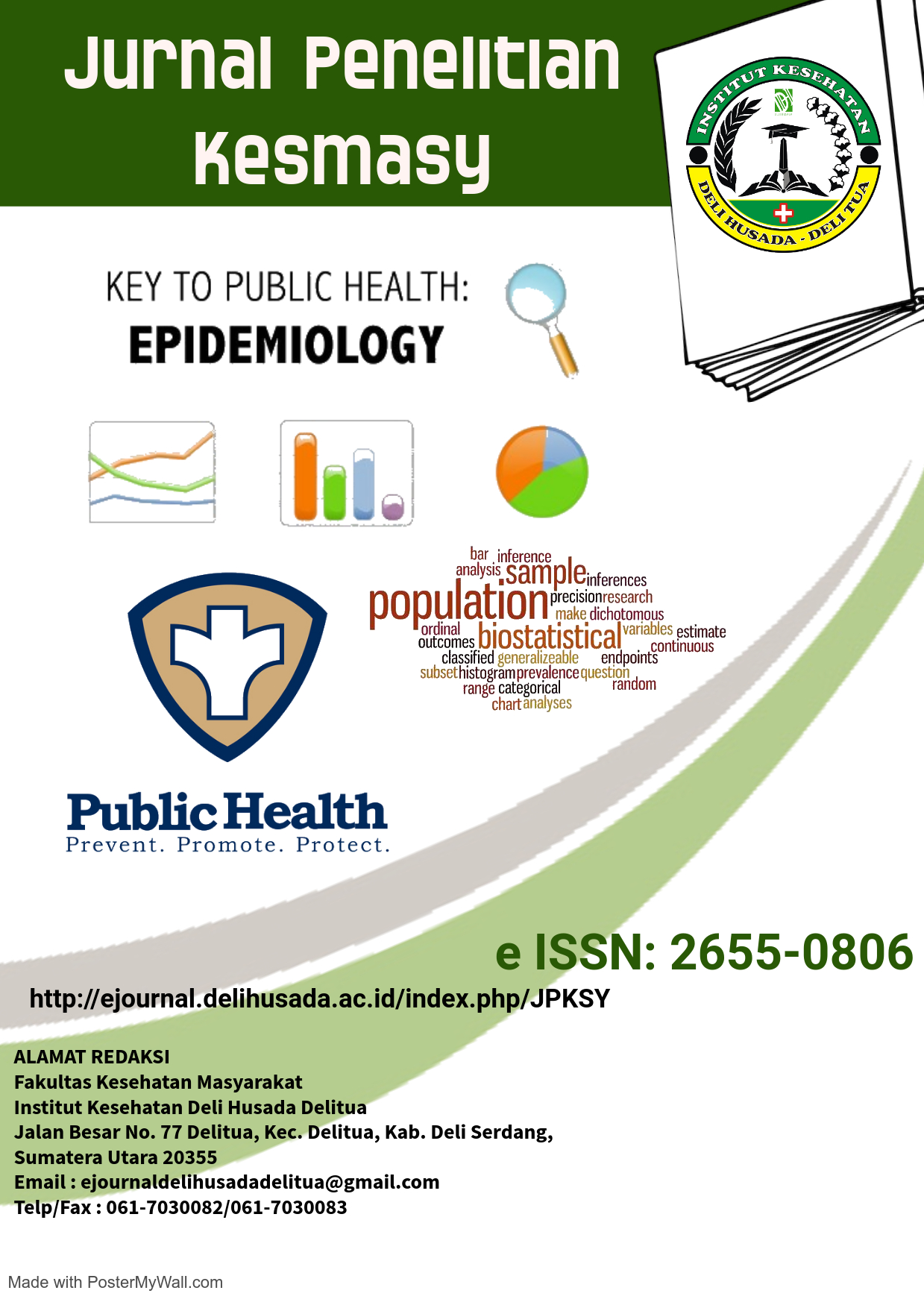HUBUNGAN KARAKTERISTIK BALITA DENGAN KEJADIAN STUNTING PADA BALITA DI PROVINSI SUMATERA UTARA
Abstract
The world ranks Indonesia fifth for the preval_ence of stunting. Stunting is not only about a straight physical growth issue, but also it severely inhibits cognitive functioning and cognitive ability. The objective is to examine the correlation among age, sex, birth length, and birth weight about stunting in children between aged 24-59 months in North Sumatra in 2013. The data utilized in this investigation were secondary data from the Basic Health Research Indonesia, known as RISKESDAS, run in 2013 as a cross-sectional study with a sample size of 573 children. Data were gathered via structured questionnaires and analysed via the chi-square test. The variables analysed included the child’s age, sex, birth weight, and birth length. The findings showed that 40.3% of the children were stunted. The percentage of infants with diminished birth weight (<2500 grams) stood at 2.3%, and those delivered with abbreviated birth stature (<48 cm) accounted for 85.3%. There was no significant correlation between stunting and sex, birth weight, or birth length, according to the results of the chi-square test. Nevertheless, age was linked with stunting (p = 0.044; RP = 1.24), showing that children aged 24–36 months had a 1.24 times higher chance of stunting. Families are urged to make the most of community-based health services, including Posyandu, in order to monitor and assist youngsters in catching up on their growth.







